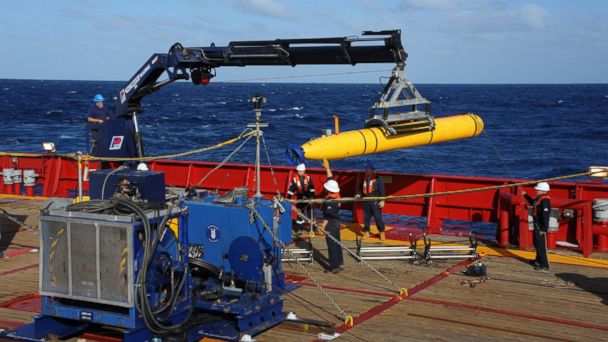Unmanned 'Bluefin-21' Sub Searching for Flight 370: Here's What It Does
Search teams scanning the depths of the Indian Ocean for signs of missing Malaysia Airlines Flight 370 are using a high-tech drone submarine known as the "Bluefin" to take sonar images of the ocean floor to aid in the search.
The search crews detected multiple "pings" on sonar equipment last week that they hoped indicated the presence of the plane's black box, but no pings have been detected in days, leading searchers to conclude the batteries have likely run out on the recording device.
The next step, according to Angus Houston, the head of the search effort known as the Joint Agency Coordination Centre, is to send the Bluefin 21 automated submarine down to try and find actual evidence of wreckage on the seafloor.
The Bluefin 21 can dive as deep as 14,000 feet. It's limit is right about the depth of the Indian Ocean where the pings were detected.
The submarine will take 24 hours to complete each mission: two hours to dive to the bottom, 16 hours to search the seafloor, two hours to return to the surface, and 4 hours to download the data from each search, Houston explained today.
The data will create a 3D sonar map of the area to check for any debris on the seafloor.
Houston said that with the size of the search area right now, the Bluefin will take weeks or months to comb the entire area.

In this handout image provided by the U.S. Navy, The Bluefin 21, Artemis autonomous underwater vehicle (AUV) is hoisted back on board the Australian Defense Vessel Ocean Shield after successful buoyancy testing April 1, 2014 in the Indian Ocean. (Peter D. Blair/U.S. Navy via Getty Images)